
In the early 80s, photographer Bruce Osborn shot a Japanese punk rocker posing with his mother. The iconic cross-generational portrait that resulted changed his life, leading to an ongoing series of ‘oyako’ (parent and child) photographs. His work has been featured in innumerable exhibitions and eight books, and in 2003, even to the establishment of an annual ‘Oyako Day’ (Oyako-no-hi), celebrated on the fourth Sunday of July.
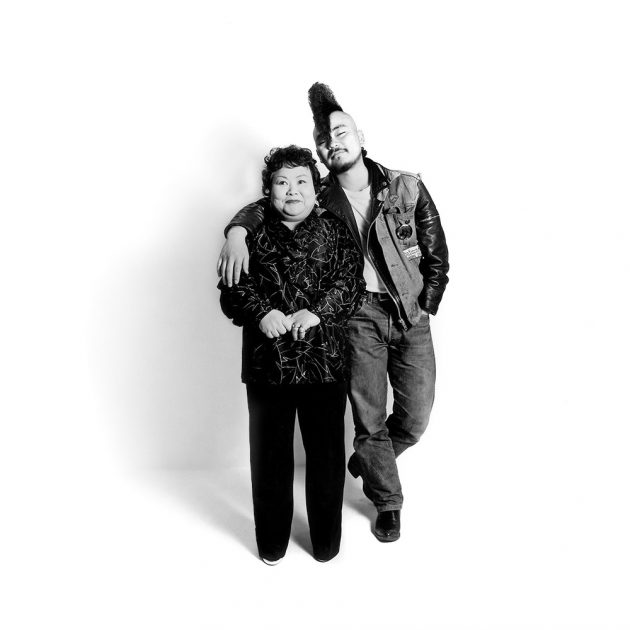
Could you tell me a little about yourself, and how you ended up in Japan?
Bruce Osborn: Before I came to Japan, somewhere in the process of studying photography I met my future wife Yoshiko, and I eventually ended up in Japan because of her. I had the chance to do an exhibition in Japan, and lot of things happened as a result, so we went back to LA, packed everything up and three months later we were back in Japan. That was in 1980. In America I was working for a music magazine and freelancing, music-related, but when I came to Japan, it was very exciting because I could do records and CDs but also advertisements and magazines, a lot more different media in the field of photography.
How did you get into photography?
Going to school I went through all sorts of majors trying to figure out what I wanted to do and eventually ended up in art. Within art, I took lots of different courses but I decided I wanted to pursue photography because I liked the way when taking photos you have the chance to interact with other people to create your art. You have an idea of what you want to do but it changes in the process with that person and how you interact. Photography gives me a lot of opportunity to pursue my interests and meet people and go places—it’s a great way to work.
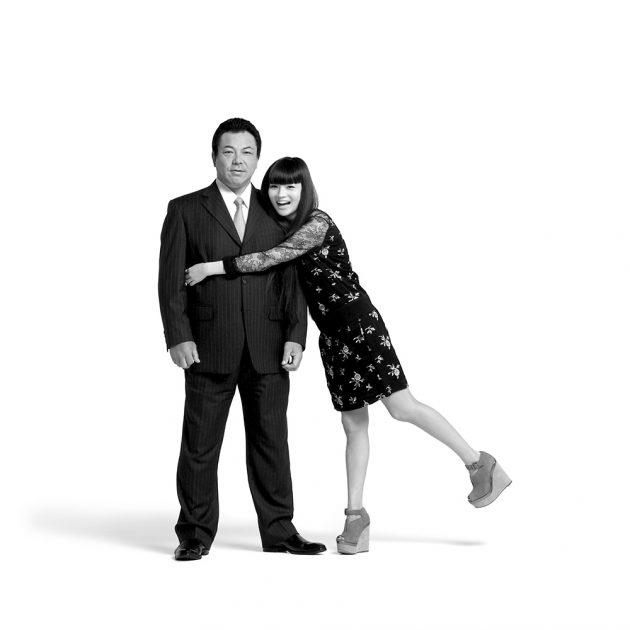
Is the Oyako project still ongoing?
It’s very much ongoing. I was just in Los Angeles for Photoville, a big photography festival, to show the Oyako photos. I still work with advertising agencies and for magazines, but it seems that Oyako has become the central part of my work.
Was there a particular photo that you had a lot of comments on? One photo that stood out for me was the one with the parents with tattoos, holding their child.
Many people commented on that one because of the whole off-balance of a smiling kid and the parents. And the other one was the one in Kyoto Journal (KJ93: food) of the sushi chef, with the father looking at his son holding a platter of sushi. It was great fun to get reactions and explain ‘oyako’ as a word, parents and children as one unit…
For the photo of the punk rocker and his mother, you actually shot them again recently—is that correct?
Yes, I’ve taken them four times! The first one was taken in 1982, that was my very first oyako photo. In 1993, you can see his Mohican and then in 2003, he has a blonde Mohican—more and more dynamic. In the last one his Mohican is more like a kewpie, but still punk rock. So maybe I’ll have to wait a few years before I take them again. People ask, “What’s the photo that stood out most to you?” and I have to say that one, because I thought it was an interesting way to shoot a punk rocker that was much more than just that.
For some reason, this project got a lot of response, so I have continued to have requests to do exhibitions and things like that every year since. I’ve never had another series where I’ve gotten so many shows and continued to take more photos. It’s touched a lot of people too and just continued and continued, and here we are.
I read that when you took that first photo you were thinking about how this experience might inform your own parenting, as you were expecting your first child—what kind of things did you learn and end up applying?
I don’t think I learned a lot at that point, but I think I have learned through the process that every parent and child has a really unique communication and way to relate. The first person a young child meets is the parent, that’s their first relationship. It’s really such an important relationship, which is obvious but it has such a big effect on your whole life.
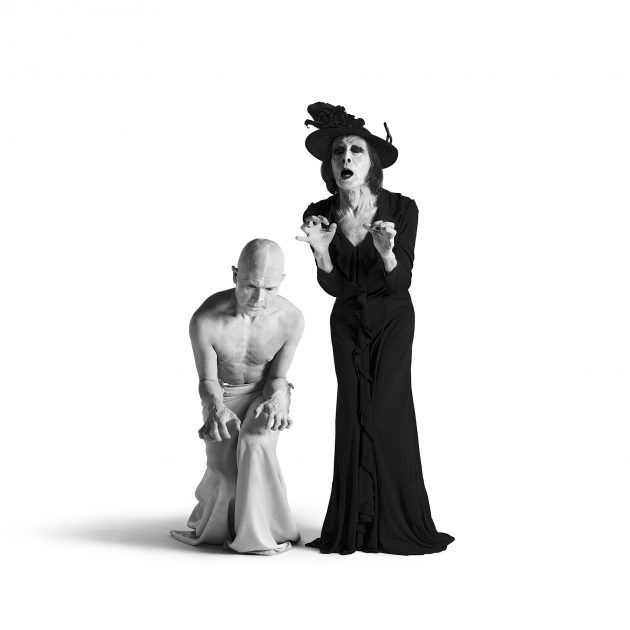
Have you kept count of how many oyako you’ve photographed so far?
We don’t know exactly how many, but we have arrived at around 7,500 at this point. Every year, besides the Oyako-no-hi we always shoot a hundred families, but now we have sponsors and other events so I’m probably shooting at least 500 or so a year here and there with this project.
How do you find oyako? Do you just spontaneously walk up to people and speak to them?
For Oyako-no-hi, we have people apply. Firstly we try to find variety. People send in information about themselves and why they want to take a photo. We also have sponsors too, we introduce it on some radio shows, there are many different places where we’re giving out invitations. Otherwise, we shoot for the Mainichi newspaper, and the Mainichi staff, my wife and I come up with different people we think would be interesting. In that case, it’s more well-known parents and children. So we’ll shoot like, Mr. Maric and his daughter Luna who is a rapper, or Terahara Ayaka, a musician whose father’s a musician, or Nomura Mansai, him and his father. And then, there’s my own personal way; usually two people I know or meet or people who know what I’m doing.
When I originally started I was very much thinking about the work uniforms, like a kabuki person or chindoya or traditional tobishoku carpenter—everybody had interesting clothes for their job that I had not seen in America, so I was looking very often for that kind of thing. In the case of the tattoo artist, we were introduced through a fashion designer—Issey Miyake ’s company, because he was drawing tattoo designs for Issey Miyake, T-shirts with irezumi on them.
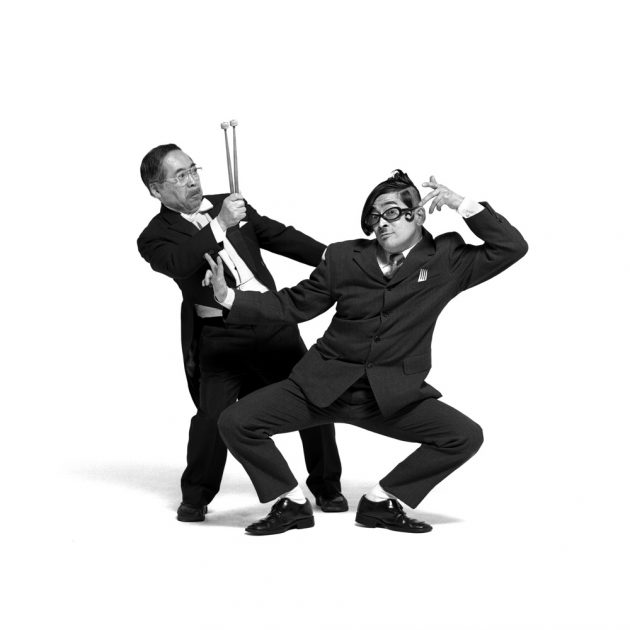
Do you still keep in contact with your subjects?
Yeah, a lot! Definitely not 7,000 of them though. I think for many people when they introduce their family it’s very personal, so they really feel like they’ve opened themselves up so much through that experience so they feel very close. Even though the photo shoot may not be that long, a strong connection is made. We can’t shoot them every year but we’ve shot some families five or six times probably. The first time there’s like a little tiny baby and next time there’s two—next, there’s three, four children and they’re growing up and we see that happening, and of course, how the relationship changes as it goes over time.
Do you take a lot of photos of mixed-culture people as well?
Of course, it’s so much a part of our lives because our children are mixed culture.
In one case, a very interesting lady and her husband, she’s Japanese and her husband is American but they have 10 adopted children and they’re all from different countries. That was a really special chance to meet different kinds of family. That’s kind of a thing you get when we’re trying to find different people. We’ve also shot three generations or in Okinawa, even four generations of oyako.
We have other cases, like where parents are divorced and the father has difficulty seeing a child because of the way the law works but they get a chance to come for the photo and get together again. We shoot people that are separated that have the chance to get together for the photograph. Sometimes we have a case where the father and son can’t communicate because they had a fight and they haven’t been able to get together—but they want to, just not knowing how to start. Taking the photo is an opportunity for some to get together and that wall goes down.
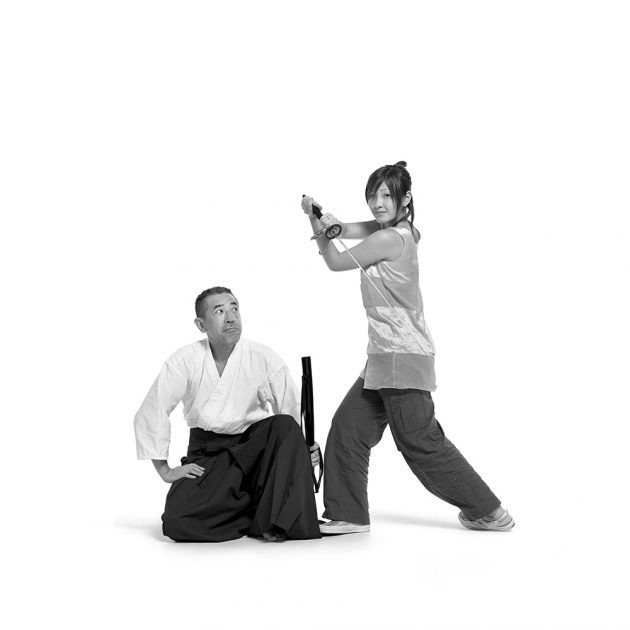
So through your project you’re able to also create a stronger bond between families?
Uh-huh. Sometimes we don’t know about it. Other times, like a friend of mine wanted to take a picture with his daughter and said, “Oh, I don’t have any confidence to ask her because she’s been raised by my ex-wife and I haven’t had the chance to really get close.” But then he called back a few days later and said “She said okay!” and after that he realized that she needed him just as much as he needed her. Now she has three children of her own so he’s able to share a part of that. At least we know that photograph created an opportunity to get together and break down the nervousness on how to communicate.
Do you find that a lot of children that you took photos of in the past follow in the footsteps of their parents, career-wise? Was any pressure evident there while you were taking photos, for example in the shot in KJ’s Food issue of the sushi chef and his son?
I just love that photo, but that was just a moment. I didn’t see that the father was kind of a strict father. But in one moment I saw that his son’s eyes were off to the side while the father was looking down that you felt the father was always looking. I do think in the photo of two priests—father and son—not necessarily the parent gives the pressure but the child feels the pressure. But he is taller than the father and somehow I think he’s walking in his father’s shadow. Later, I’ve taken them with his child and I see him—because that’s my wife’s family’s local temple back in their hometown, if we go back we can see him—and now he’s standing so tall and you feel, he felt like he still had much to learn, but over time he became confident.
Nomura Mansai, a noh actor who’s the artistic director for the upcoming Olympics, said in an interview the relationship between him and his father is that of a teacher and student, he thinks of that as the most important way to see his relationship with his father. I think in that cultural or artistic field there would definitely be that relationship. When I look to daughter and mother relationships, they’re really like older sister and younger sister. That relationship between mother and daughter is very different from father and son. Men have a very different way of communicating. The son with the mother, particularly when he becomes more adult, he takes the role of the father, becoming the man of the family. The father with his daughter has the biggest smile on his face, proud to be with his daughter. Overall, I feel that men have this kind of rivalry, that they have to try hard to equal their father. It’s very interesting to see relationships of two people in the studio.
Didn’t Oyako-no-hi became sort of an official day in Japan quite a few years back—how did you make that possible?
I think we’re kind of in between, we’re minor major or major minor, I don’t know. A lot of people don’t know about it but at the same time, I think a lot of people do. We’re still going step by step but yeah, I think we’ve been very fortunate that we have many people supporting us. There’s about 100 photographers now working on our Oyako-no-hi project. It’s not just my own sakuhin. We hope it could become something more like Mother’s Day and Father’s Day so we have to give this project to many people to share. Every year more photographers join us so that creates excitement.
From here on what do you set out to achieve with Oyako-no-hi?
By 2022 it’s going to be 20 years for Oyako-no-hi. I’m always still shooting other projects besides that but my wife and I have our dream to have more chances to go overseas to introduce the word ‘oyako’ and Japan through these photos. In the future, our Oyako Day would be more showing photos of what we’ve done over the years and collaborating with other photographers. I’m looking for more opportunities to go that way.
Hopefully someday if you look in an English dictionary you’ll see the word Oyako. Oyako is about the continuation of life going from the parent to the child. I think it’s a word that doesn’t exist in English or other languages.
The Oyako-no-hi Project www.oyako.org/en/

Former KJ intern Rikka Kaijo is currently based in Tokyo working at an IT company. Prior to moving to Tokyo, one of her greater passions had been photography and conducting interviews as a marketing intern.
Header image: Parents: Ohwada Mitsuaki / tattooist Ohwada Akie / housewife
Child: Ohwada Keiko / elementary school student